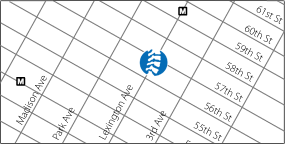I first wrote an article on the role of “balance training” in running and injury care and prevention back in 2002. Since then, as fitness trends have moved away from only performing exercises on isolated machines to full body, “functional” exercises, such as in some “Boot camp” and cross-fit routines, workouts which challenge the balance system have become commonplace in many general fitness, running and triathlon conditioning programs. However, often these exercises can be utilized at the wrong time or in the wrong order so it is important to know how to properly integrate balance exercises into your running and fitness routines.
Improving our balance is one of the best ways to maintain a healthy neuro-musculoskeletal system and in turn prevent injuries, including those that occur with running- which essentially is a single leg sport as we stride from leg to leg. To review, balance is the ability to maintain our “equilibrium”, or an upright, controlled posture, while performing an activity. Balance is one of the key components of fitness and is also a key to preserving musculoskeletal health, especially as we age. Both de-conditioning and injury can lead to a loss of this ability. De-conditioning of this system occurs as most modern occupations require less and less diverse motions and more and more sedentary hours at the desk, causing balance ability and cardiovascular fitness to decline. Old injuries such as ankle sprains or back pain and dysfunction that aren’t properly treated and rehabilitated also can lead to poor balance.
Before we discuss how to restore lost balance ability, an understanding of how a healthy body maintains equilibrium is necessary. Visual cues from our eyes and from the “semicircular canals” in our inner ears as well as specialized sensory nerve endings called proprioceptors in our joints and muscles help us maintain our balance. Feedback from these receptors to the central nervous system in turn activates our core and extremity muscles to help us maintain a balanced posture. Thus, balance is achieved both at the local joint level as well as through the entire nervous system. Proper function along the entire “kinetic chain” of joints, muscles and myofascial tissue is necessary for well developed balance ability.
Balance is closely related to core/extremity stability and strength, and both are developed together as infants grow or after injury with rehabilitation. Think of a baby first learning to walk and gradually using the core to maintain an upright posture, and at the same time finding the right balance point to not fall down. Or, as a child or adult, think of learning to ride a bicycle or ski, or reach out to throw, catch or hit a ball - the correct core contractions are necessary for you to remain upright and balanced and depend on proper feedback from the sensory/balance system to learn when to contract what muscles.
For this reason, the balance exercises described below are usually taught to patients as part of most stability and core strengthening programs and are sometimes dependent on basic core strength before they can be performed safely. These exercises are much more difficult if the core muscles are not firing properly.
Exercises to improve balance start with just simply practicing "single leg-standing" (lifting one leg off the ground by bending one knee behind you) and holding a stable posture for up to 30 seconds. This should be possible with the eyes open and also closed, and can be used as a test of one's balance ability. After you have achieved stability with this basic exercise, you may progress to challenging this upright posture with arm and leg movements forward, backward and laterally, while maintaining your balance and body control. More advanced exercises involve performing weight training exercises on a single leg or on an unstable surface, such as the “bosu” trainer. However, traditional “double leg stance exercises” and exercises on stable surfaces still have merit for general strength development. Additionally, for those without balance deficits, sport specific drills and simply practicing your sport or activity will help maintain and improve balance.
As noted above, common injuries such as an old ankle or knee sprain or chronic lower back or neck pain can cause poor balance as they often result in scar tissue, joint restrictions, and muscle inhibition/weakness, which alter the propriceptor function in these key areas. An acute ankle sprain, for instance, will result in swelling and joint stiffness that alter our proprioception from that joint. Most people stop worrying about the injury once the swelling reduces and they can walk again, but the scar tissue in the ligaments and joint restrictions remain. Thus, passive treatment involving chiropractic adjustments and soft-tissue care should be performed before advance balanced exercises begin. Without these treatments, single leg exercises can sometimes do more harm than good! Chiropractic adjustments help to restore proper joint range of motion and nervous system control, which is essential for those proprioceptive nerve endings to function properly. And soft tissue techniques help allow proper nerve function in the myofascial structures, which is essential for balance and coordinated joint movement.
To organize all of the different types of balance exercises, we divide them into 3 groups based on your current level of “balance fitness”: Acute/Activation Care (Red Zone), Corrective Care (Grey Zone), and Performance Care (Blue Zone). This three groups, or “Zone”, system of exercise and treatment, is used with my Prepare to Compete® Injury Prevention System for simultaneously restoring the other components of fitness: core/extremity stability, core/extremity strength, aerobic endurance, muscular endurance, flexibility, and power.
For those who currently or recently have had an injury that has limited the amount of weight bearing activity (or who recently have put some time in floating around on the gravity-less International Space Station), we need to re-establish the basic “activation” of the balance system. This involves both office treatment to activate inhibited muscles and release scar tissue and joint restriction and home exercises. Starting with the “Red Zone” is crucial because we must stop and get treatment and only do basic exercises until pain levels decrease and joint and muscle treatments take hold. Examples of balance exercises for this stage are single leg standing, single leg standing with knee hug, stability ball balancing, and double leg rocker board (not pictured). They can be performed for a specific time, such as for a total of one minute per exercise per side, and repeated throughout the day.
 Single leg standing
Single leg standing
 Standing knee hug
Standing knee hug
 Stability Ball Balancing
Stability Ball Balancing
The next level is the “Grey Zone”, for those who have some basic balance ability and can perform their sport but who demonstrate poor balance when challenged with increased exercise intensity and experience pain or re-injury when resuming regular training. This is the “grey zone” because the athlete is not “injured’ and unable to perform the chosen activity, but the athlete is not fully functional and healthy. Exercises here will challenge the balance system to remain activated under greater loads and on less stable surfaces. Office treatment still is often necessary for continued correction of any joint and myofascial restrictions locally as well as in other joints of the kinetic chain (the knee, hip and back for instance in our ankle sprain example). Single leg rocker board, bosu balancing, single leg squats and multidirectional lunges are examples of “Grey Zone” balance exercises.
Finally, the “Blue Zone” is what we want to strive to achieve: we have good balance ability even under tough conditions and can challenge ourselves with exercises that increase our ability to maintain balance and proper form in our specific sport at high levels. For running, this would be running well and with a low risk of injury at faster paces or for longer periods or on a cross-country course - all of which make maintaining proper posture more difficult. Exercises here will involve the performance of plyometric type movements as well as running drills and workouts that challenge our ability to maintain good form while exerting more force or moving faster or going longer. Examples are “jumps” onto rocker boards, box jumps, trampoline exercises, ladder drills and exercises which mirror the motions of running while on the bosu or other unstable surface.
I hope this explanation of the how, why and when of balance training helps everyone properly integrate the above exercises at the right time in order to prevent injury and improve performance!
See you in the park,
Marc
Please consult with a sports medicine professional before performing any of the exercises described above if you have a current injury or are unsure about how to perform them safely.
 Dr. Marc A. Bochner on
Dr. Marc A. Bochner on  Thursday, October 30, 2014 at 01:26AM
Thursday, October 30, 2014 at 01:26AM 
 3) All endurance races have “rough patches” we must get through. When you face some challenging miles, for a confidence boost, remember back to your tough training runs and how you overcame and finished them. Thinking of your personal motivation for running the race in order to remind you why you are out there and how you are lucky to be where you are right now also can help. Also, it may be cliché, but “take it one step at a time” and focus only on the few blocks ahead of you (easy in the NYC marathon with our numbered streets along most of the course) instead of the total distance to go. In most cases, before you know it, you will be feeling better and be able to let your mind wander a little bit if you want to.
3) All endurance races have “rough patches” we must get through. When you face some challenging miles, for a confidence boost, remember back to your tough training runs and how you overcame and finished them. Thinking of your personal motivation for running the race in order to remind you why you are out there and how you are lucky to be where you are right now also can help. Also, it may be cliché, but “take it one step at a time” and focus only on the few blocks ahead of you (easy in the NYC marathon with our numbered streets along most of the course) instead of the total distance to go. In most cases, before you know it, you will be feeling better and be able to let your mind wander a little bit if you want to.





